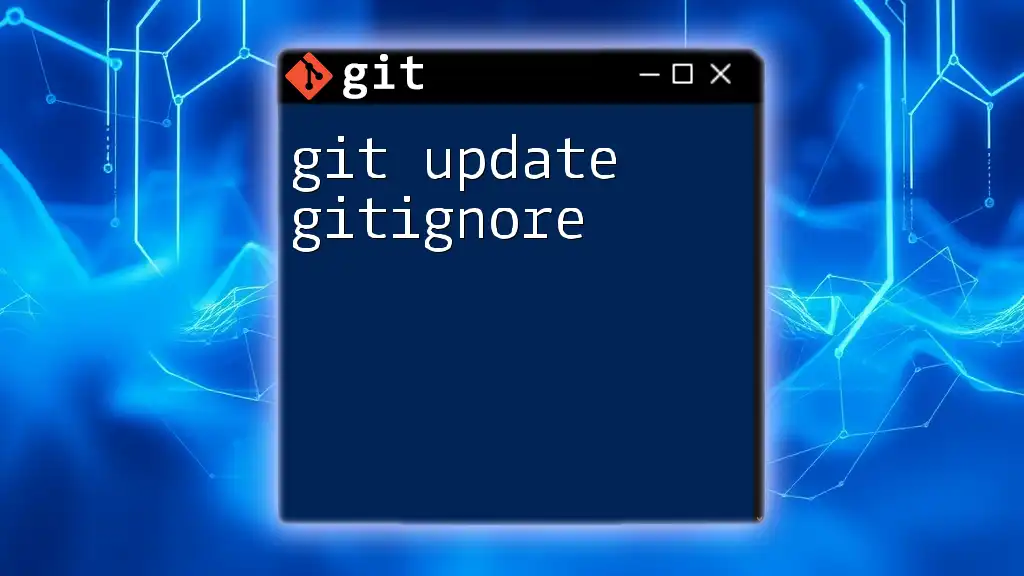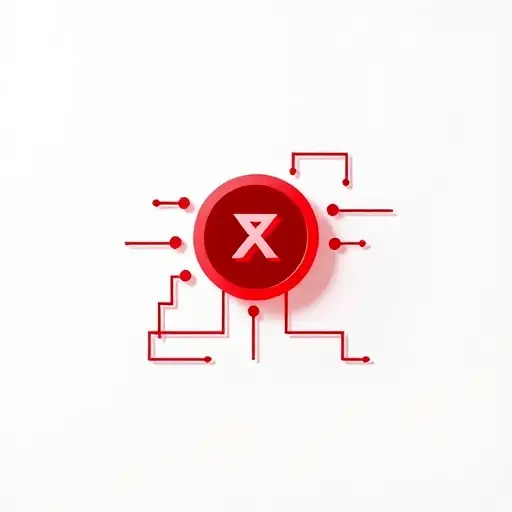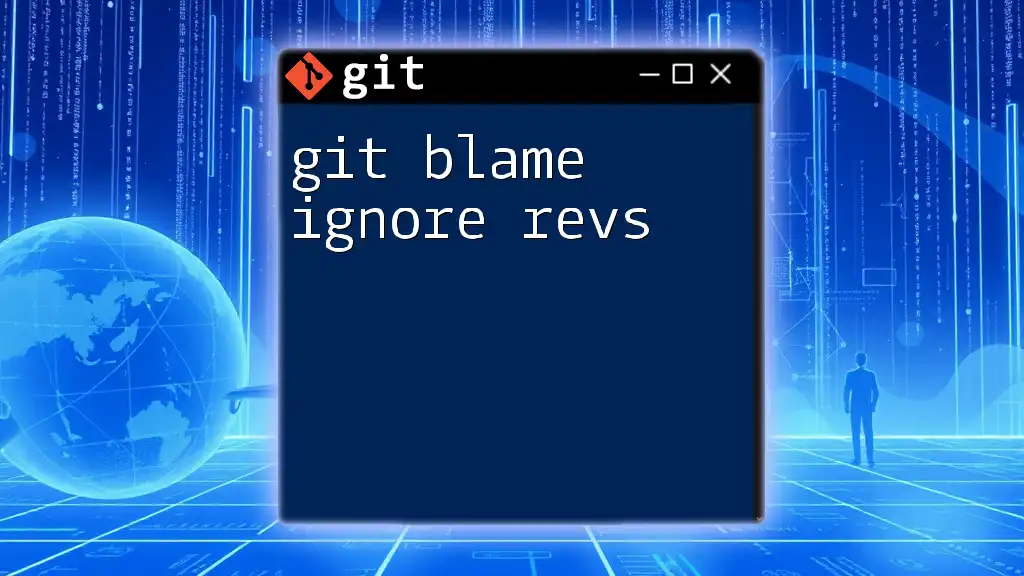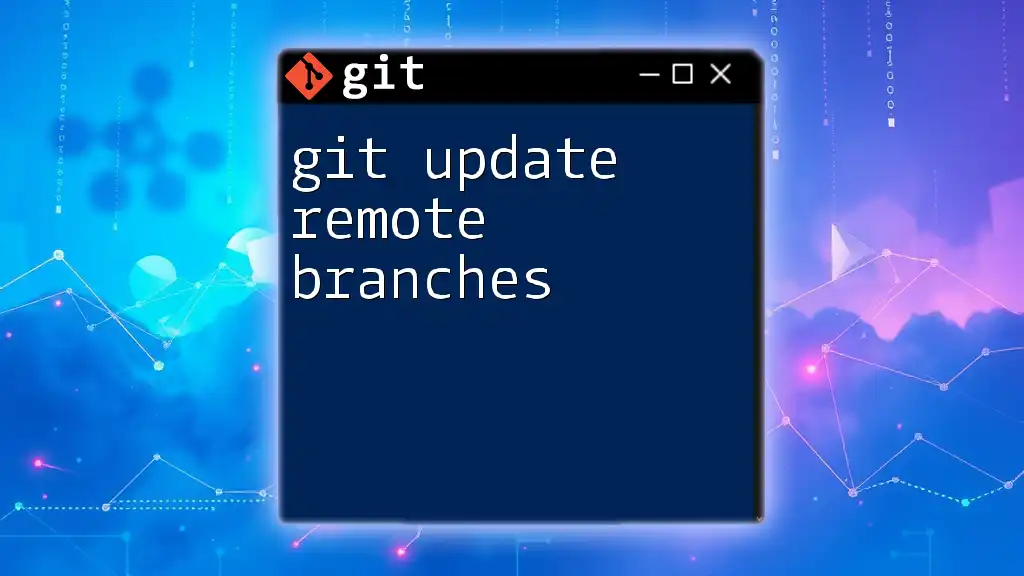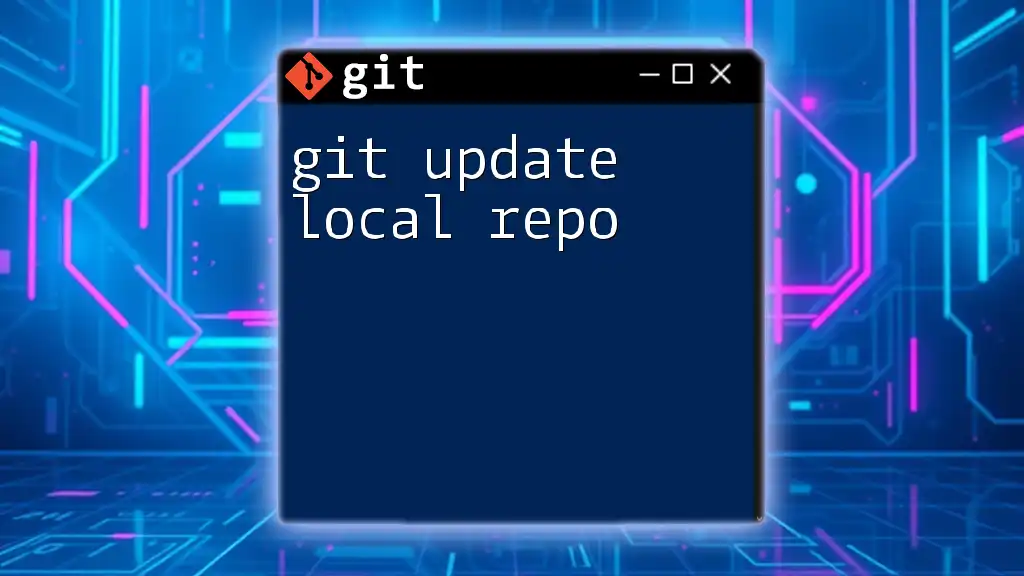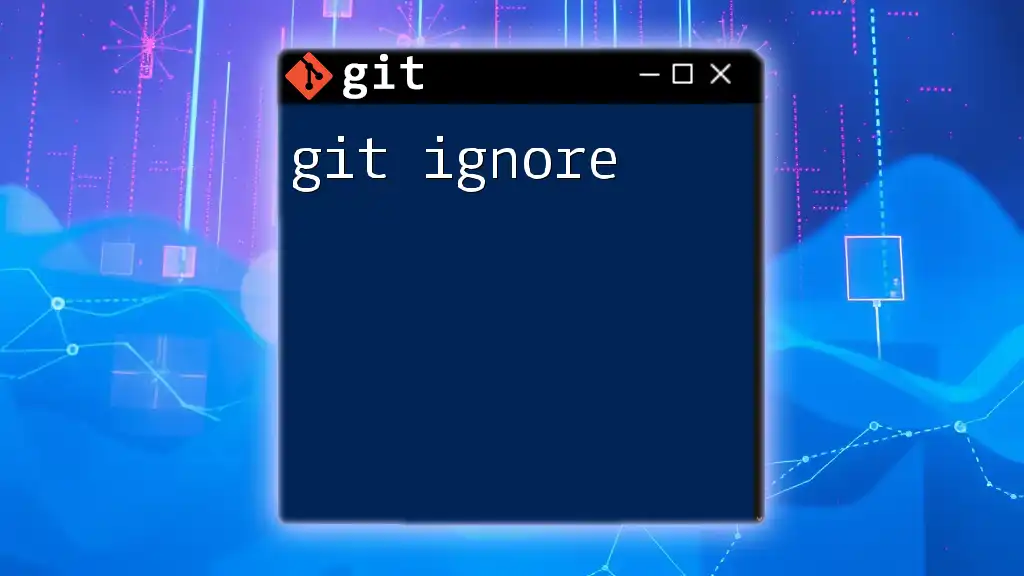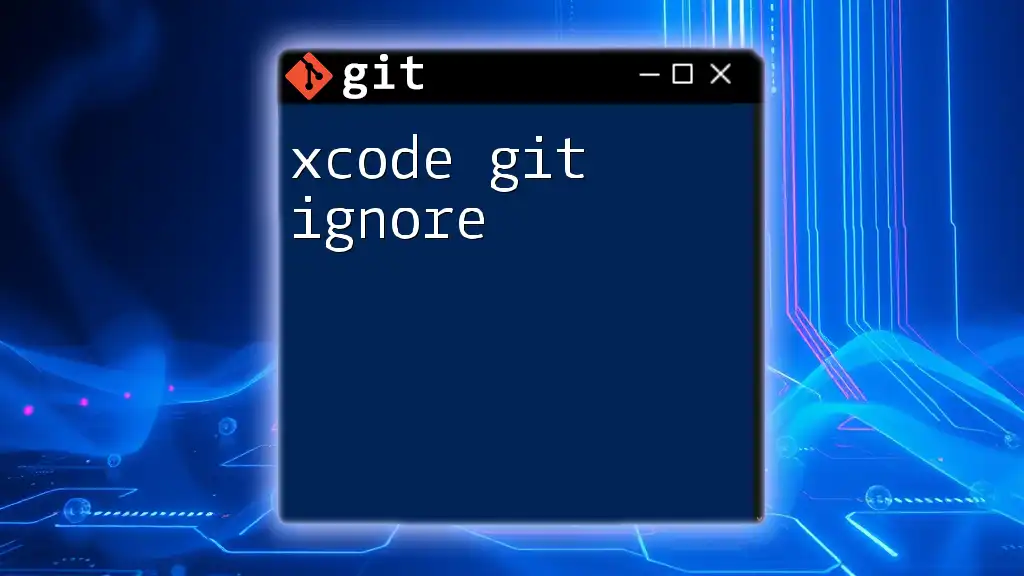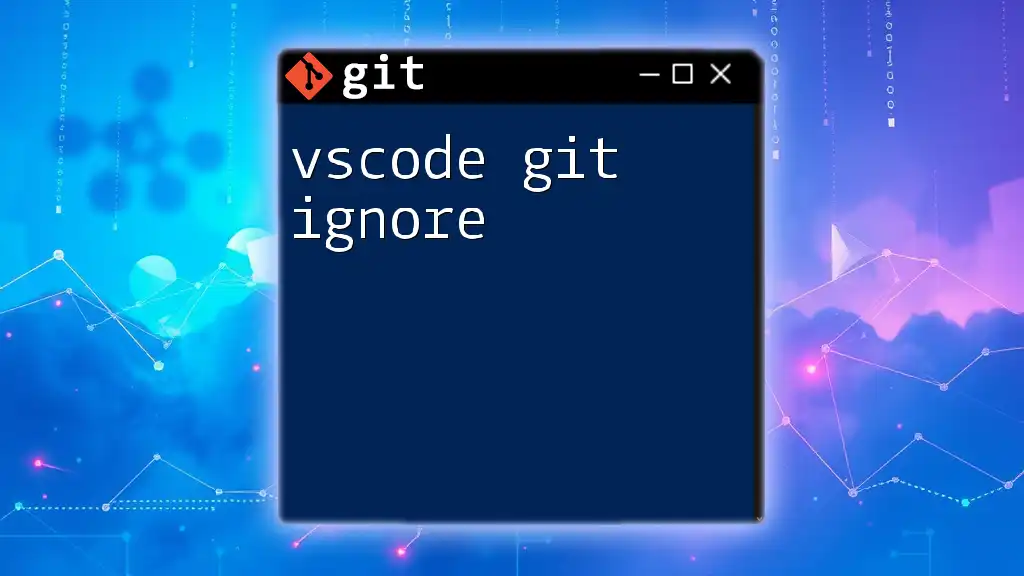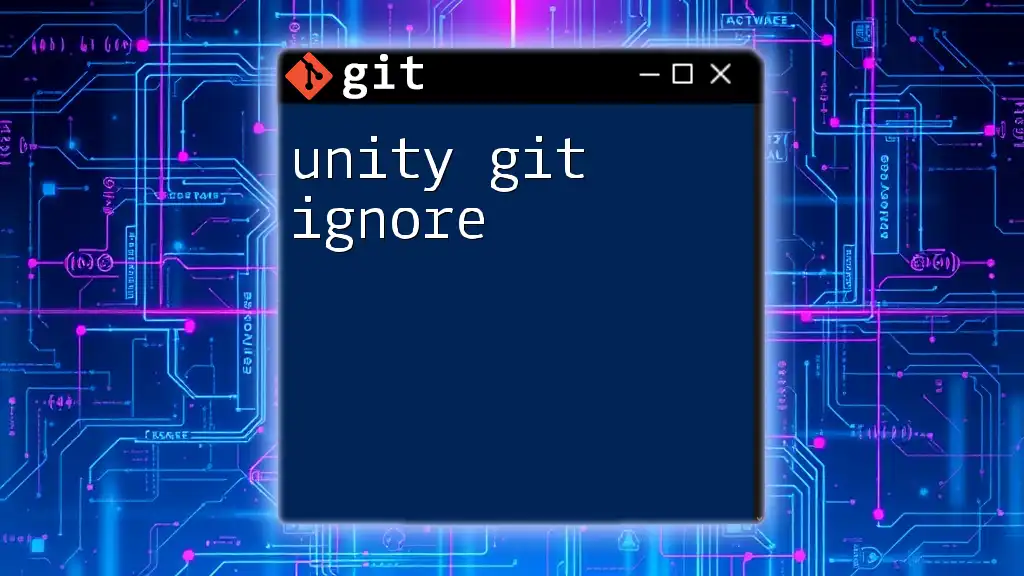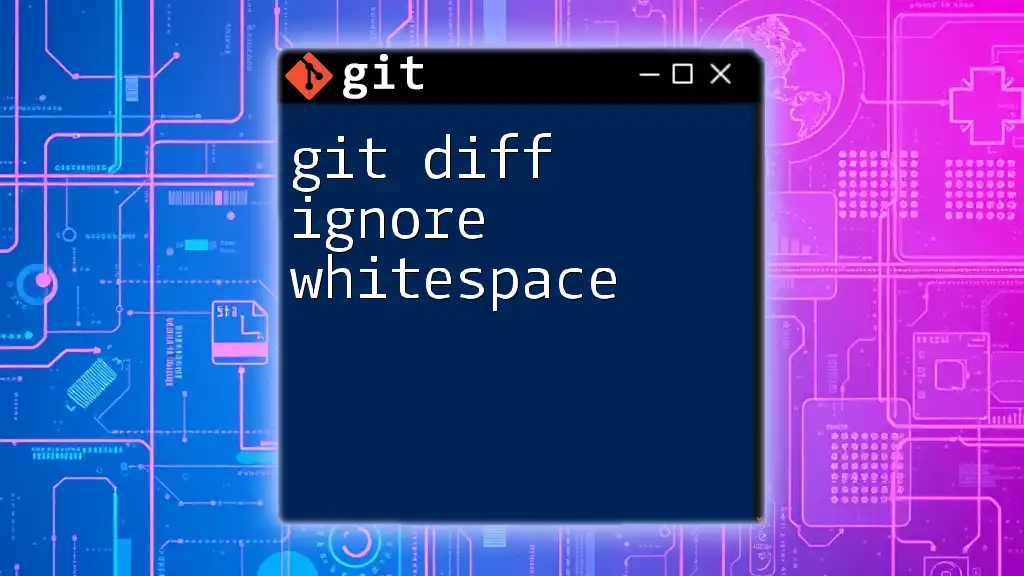To update your `.gitignore` file to exclude additional files or directories from being tracked by Git, simply edit the file and add the patterns for the files you want to ignore, then stage the changes. Here’s a quick example:
echo "logs/" >> .gitignore
git add .gitignore
git commit -m "Update .gitignore to exclude logs directory"
What is a .gitignore File?
A `.gitignore` file is a crucial part of any Git repository. It defines which files and directories should be ignored by Git, preventing unnecessary or sensitive files from being tracked. This helps maintain a clean repository and minimizes clutter, making your project easier to manage.
Common Examples of Files to Include in .gitignore
Files that are typically included in a `.gitignore` file may include:
- Log files: These can quickly accumulate and are not useful for version control.
- Temporary files: Files generated by the operating system or development environments (like swap files).
- Binaries and builds: Compiled code that can be regenerated from source files.
- Environment variable files: Such as `.env`, which may contain sensitive information.

How to Create a .gitignore File
Creating a `.gitignore` file is a straightforward process. You can start with a simple text file named `.gitignore`.
Suggested File Structure and Formatting
Your `.gitignore` file should be structured with clear patterns that specify what to ignore. Here’s a basic example of what your file may look like:
# Ignore log files
*.log
# Ignore node modules
node_modules/
# Ignore Python byte code
__pycache__/
*.py[cod]
By following this structure, you can easily specify file types or directories to ignore with clear comments that explain your choices.
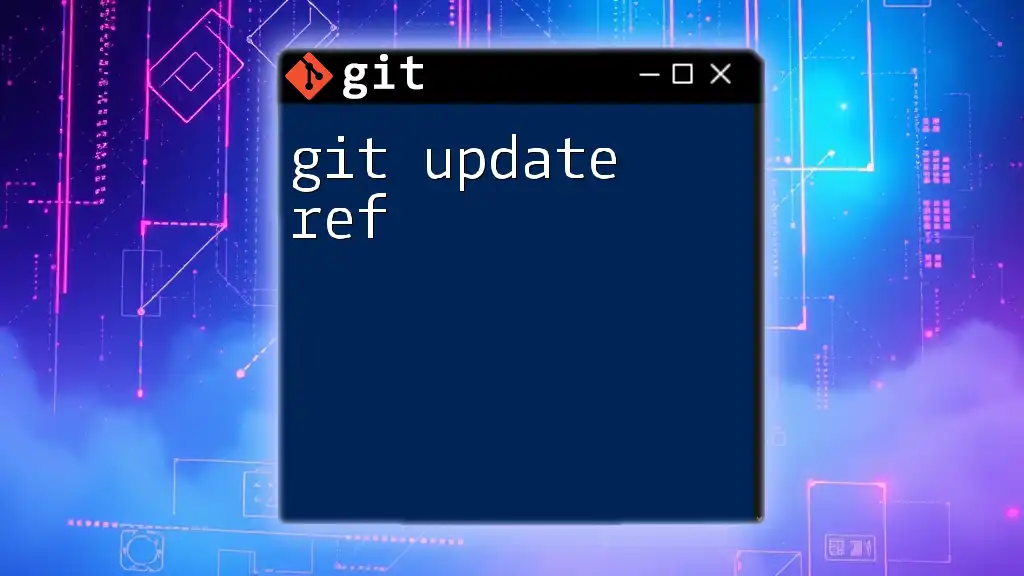
Updating an Existing .gitignore File
As your project evolves, the need to update your `.gitignore` file arises. You might need to:
- Add more file types: As your codebase grows, you may generate new files that should be ignored.
- Exclude newly generated files: For example, if you start using new tools or libraries that create files you don't want tracked.
Basic Steps to Update .gitignore
- Open your project’s `.gitignore` file: You can use any text editor of your choice.
- Add new patterns to exclude files: Specify the files or directories you want to ignore.
- Save your changes: Ensure you save the file before proceeding.
Examples of Update Scenarios
Scenario 1: Adding a New Directory
Let’s say you’ve recently started using environment variables in your project. You would want to add your `.env` file to the `.gitignore` to avoid accidentally exposing sensitive information.
Update your `.gitignore` with:
# Ignore environment variable file
.env
Scenario 2: Excluding Specific File Types
If you are working with specific files that are generated automatically, such as backup files, you can add such patterns as follows:
# Ignore all backup files
*~

Removing Tracked Files After Updating .gitignore
Sometimes, you will want to stop tracking files that are already being monitored by Git. Updating your `.gitignore` will not untrack them automatically.
To remove files that are now ignored, you can use the `git rm --cached` command. Here’s how you do it:
- Identify the files to untrack (e.g., `filename.log`).
- Execute the following command:
git rm --cached filename.log
This command will remove `filename.log` from the staging area while keeping the file on your local file system.
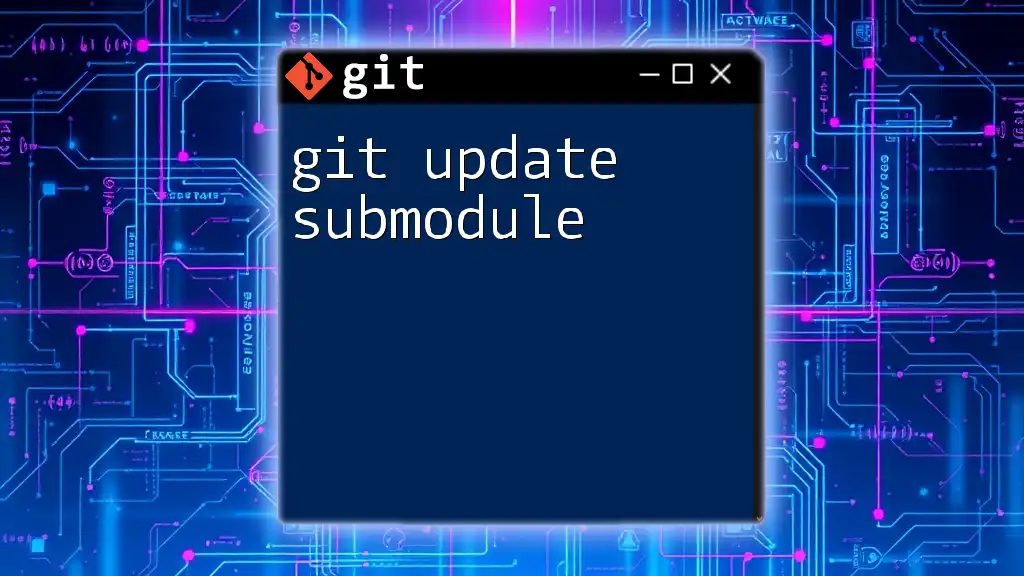
Checking if .gitignore is Working Correctly
Once you've updated your `.gitignore`, you might want to verify that it’s functioning as expected. You can use the following command to see if any files are still being tracked:
git status
If there are files listed that you believe should be ignored, you can debug the `.gitignore` patterns with the command:
git check-ignore -v <file>
This will help identify which pattern is causing a specific file to remain tracked.
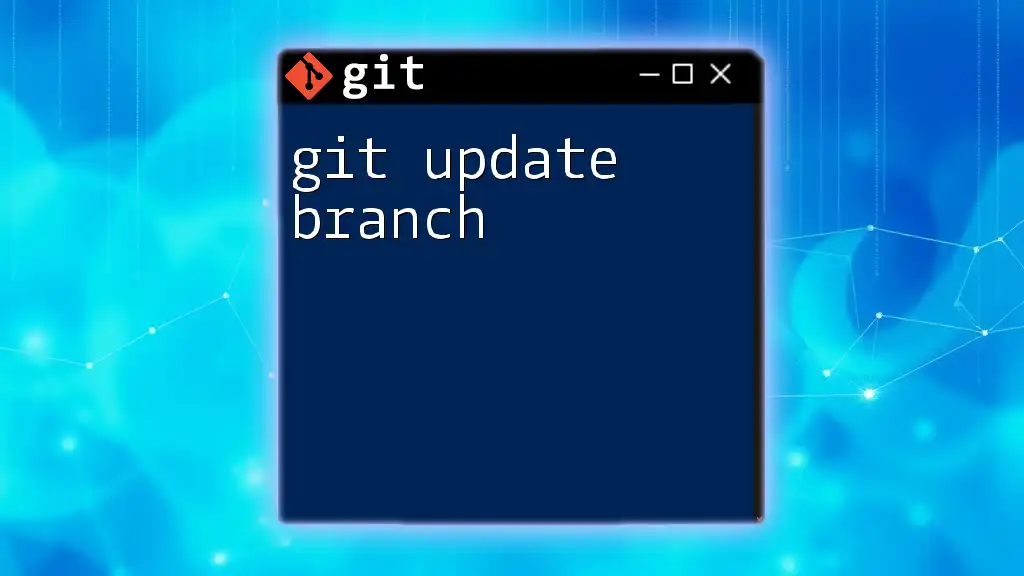
Best Practices for .gitignore Management
Maintaining a well-structured `.gitignore` is essential for any development project. Here are some best practices to consider:
- Keep it updated: Regularly review and amend the `.gitignore` file to reflect the current state of your project.
- Version control your `.gitignore`: Treat it like any other piece of code by reviewing changes through Git.
- Share `.gitignore` files: If you're working in a team, ensure that everyone is aware of changes to the `.gitignore` file to prevent confusion.
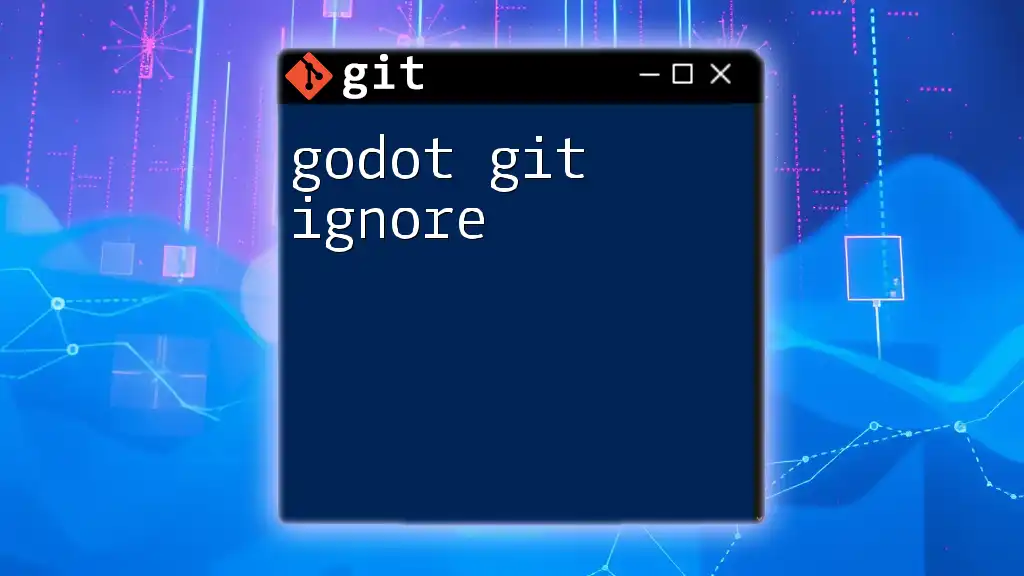
Conclusion
Maintaining a clean Git repository is essential for effective project management, and updating your `.gitignore` file is a critical part of this process. By regularly reviewing and updating the `.gitignore`, you can ensure a more organized and efficient workflow.
Understanding how to git update gitignore enables you to focus on the actual development work while leaving unwanted files out of your source control. As the project grows, keeping your `.gitignore` in check will save you time and maintain the clarity of your repository.
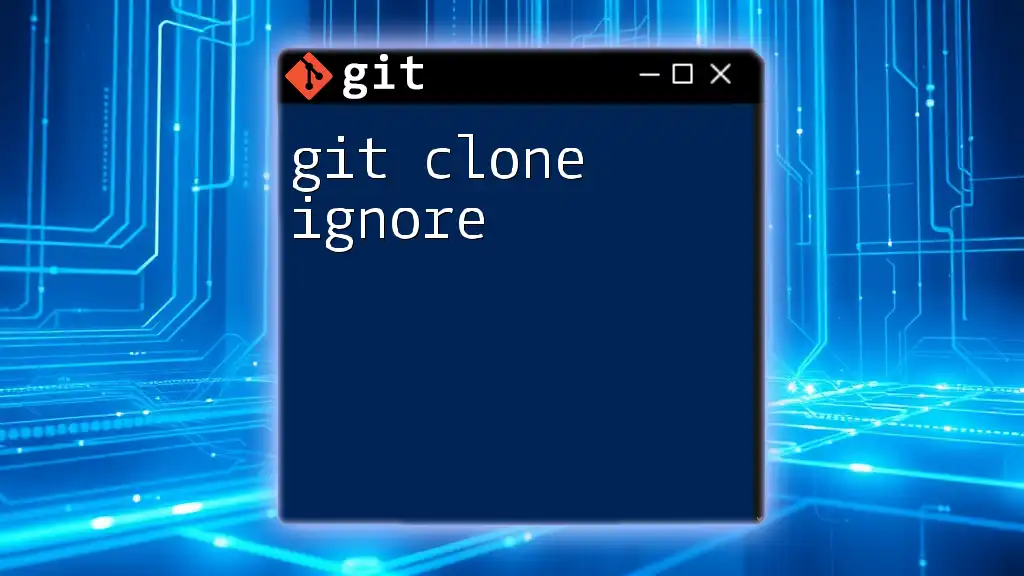
Additional Resources
For further information, consider checking the official Git documentation on `.gitignore`, as well as other recommended Git tutorials that can benefit your understanding of Git commands and best practices.

